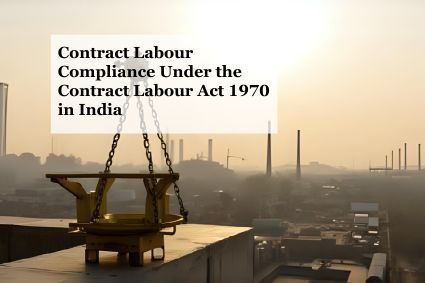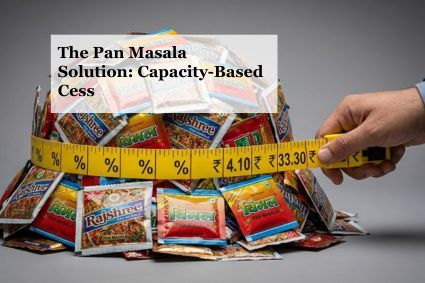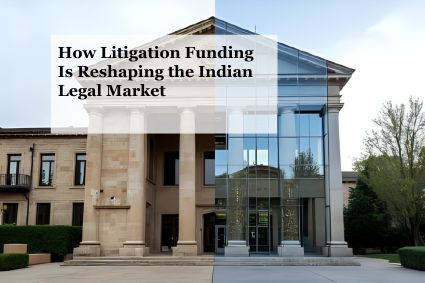Maintainability of Suit for Declaration and Cancellation without further relief – An Analysis of Jainsons Westend Pvt. Ltd. & Ors. v. S. Tarjit Singh & Ors.

Introduction
Where there is a right, there is remedy: the conduit between the substantive and procedural laws, often gets muddled in the interplay of statutes; particularly, the interface between the Specific Relief Act, 1963 (“SRA”) and other laws governing interest in property.
Section 34 of the SRA mandates that while seeking a declaratory relief, the Plaintiff must seek every other, or further, ancillary and consequential relief. The proviso to Section 34 lays a specific bar upon the Court from granting any relief, if the Plaintiff despite being capable of seeking further relief omits to do so. Therefore, a suit simplicitor for declaration is a rare legal complexity, capable of toppling if not swaddled with court craft and legal precision.
The Delhi High Court’s judgment in Jainsons Westend Pvt Ltd & Ors. v. S. Tarjit Singh & Ors[1] provides a valuable case study in understanding such complexity, and the circumstances under which such a suit for declaration and cancellation can be maintained without a prayer for recovery of possession, even where the plaintiff is not in immediate physical possession.
Facts
The genesis of the Jainsons Westend[2] case lies in a property dispute, concerning a lease hold property owned by the Plaintiff. Since 1967, a partnership firm M/s Jainsons Westend (“Tenant”) was tenant in the said property. In the year 1989, a suit was filed against the Tenant seeking recovery of possession. During the pendency of the said suit, a settlement (“MOU”) was entered between the parties, based upon which the suit was decreed on April 21, 1995.
As per the MOU, a part of the said property was handed back to the Plaintiff and the remainder portion (“Suit Property”) was retained by the Tenant. Further, it was agreed that the Suit Property was to be sold to five companies, including Jainsons Westend Pvt. Ltd (“Defendant”). It was also agreed that the Tenant shall attorn to the Defendant and pay a rent of Rs. 2,600/- per month, thereby coming within the purview Delhi Rent Control Act, 1958 (“DRC”).
Pursuant to the MOU, Agreement to Sell (“ATS”) was entered between the Plaintiff and Defendant, and an unregistered Power of Attorney (“POA”) was executed by the Plaintiff in favour of the Defendants, to facilitate the sale. A crucial pre-condition in the ATS was the conversion of the suit property from leasehold to freehold prior to the execution of sale deeds.
Thereafter, dispute arose between the parties and the Defendant first filed a suit for Specific Performance in the year 1998, which was withdrawn in the year 2003 after framing of issues. Interestingly, during the pendency of the said suit for specific performance, the Defendant executed sale deed dated June 10, 2002, for the suit property on the strength of the ATS and POA.
After gaining knowledge, the Plaintiff filed a suit for declaration and cancellation of the sale deed dated June 10, 2002. Dismissal of this suit by the Trial Court and subsequent decreeing by the first Appellate Court formed the basis of the Second Appeal before the Delhi High Court.
Contentions of the Parties before the Hon’ble High Court
The Appellant/Defendant argued that the possession of the suit property remained with the Tenant and was never restored to the Plaintiff. As such, the Plaintiff’s suit was fundamentally flawed in light of Section 34 of the SRA, since a party seeking a declaration of their right to property, being out of possession, is legally bound to seek the consequential relief of possession.
The Respondent/Plaintiff contended that while the Tenant was initially in possession, the compromise decree led to the handover of vacant physical possession to them, and they remained in actual possession. It was contended that a simpliciter suit for declaration was maintainable because any relief of possession was legally barred by the provisions of the DRC. It was argued that the first Appellate Court had, in fact, found that the rent of the property fell below the Rs. 3,500/- per month thresholds, making the DRC applicable and thus excluding the Civil Court’s jurisdiction on possession. Lastly, it was argued that since the pre-condition provided in the ATS for conversion of the Suit Property to free hold was never fulfilled, a sale deed could not have been executed by the Defendant on the strength of Plaintiff’s POA.
Issues
The issue before the Hon’ble High Court in the Second Appeal whether the Plaintiff’s suit for declaration and cancellation of the sale deed was rendered non-maintainable under Section 34 of the SRA due to the omission to claim the consequential relief of possession. This question necessitated an examination of the following three additional sub-issues : firstly, the scope and applicability of Section 34 of the SRA in the context of a suit for declaration and cancellation of an instrument executed by a third party; secondly, the effect of not seeking further relief of recovery of possession in such a suit for declaration, when the Plaintiff was not in actual possession; lastly, the effect of the Delhi Rent Control Act, 1958 (DRC), on the ability of the Plaintiff to claim possession in a civil court.
Decision
The Hon’ble High Court analysed the findings of the First Appellate Court regarding the relief of declaration sought, particularly the reliance on Suhrid Singh v. Randhir Singh & Ors[3] to the effect that if the Plaintiff was the executant of the sale deed then he would have to seek for the cancellation of the instrument.[4] However, since the Plaintiff was not the signatory or executant of the sale deed in question, his purpose could be served by seeking relief of declaration only.
The Hon’ble High Court acknowledged that though the procedural safeguard provided in the proviso to Section 34 is aimed at preventing multiplicity of proceedings and ensuring comprehensive resolution of disputes, its application required nuanced inquiry into the particular facts and circumstances of each case. It was held that the bar under Section 34 of the SRA is attracted only when the Court is competent to grant the consequential relief, and the Plaintiff, being able to seek such relief from the defendant, omits to do so. The Hon’ble High Court further emphasized that claiming consequential relief of possession is necessary only against defendants who are in possession of the property.
The Hon’ble High Court examined the terms of the compromise decree, and the ATS, and found that the possession of the suit property remained with the Tenant. Since the Tenant was not a party to the suit challenging the sale deed, the Plaintiff could not have legally sought relief of possession from the Defendant.
Further, the Hon’ble High Court considered the implications of the DRC and held that since the possession of the Suit Property was with the Tenant, whose possession falls within the purview of DRC, the jurisdiction of the Civil Court from entertaining the relief of recovery of possession of Suit Property was barred as per Section 3(c) r/w Section50 of DRC.
The Hon’ble High Court concluded that since the Civil Court could not have granted the relief of possession, the Plaintiff could not be penalized under Section 34 of the SRA for not claiming it.
Conclusion
The Delhi High Court’s judgment serves as a critical reminder of the rule of handmaiden of justice.[5] Procedural requirement under Section 34 of SRA, is not an undefeatable barrier when the law itself precludes the claim for any further consequential relief in a particular forum. The case underscores that the ability to seek further relief must be both legally permissible. When a special statute, such as the DRC, explicitly ousts the jurisdiction of the Civil Court to grant a particular relief, the Plaintiff cannot be faulted for not including a prayer for such relief in a suit for declaration and cancellation.
[1] 2025 SCCOnline Del 181
[2] Supra.
[3] (2010) 12 SCC 112
[4] Section 31 to 33 of SRA
[5] Re Coles [(1907) 1 KB 1]
By entering the email address you agree to our Privacy Policy.



